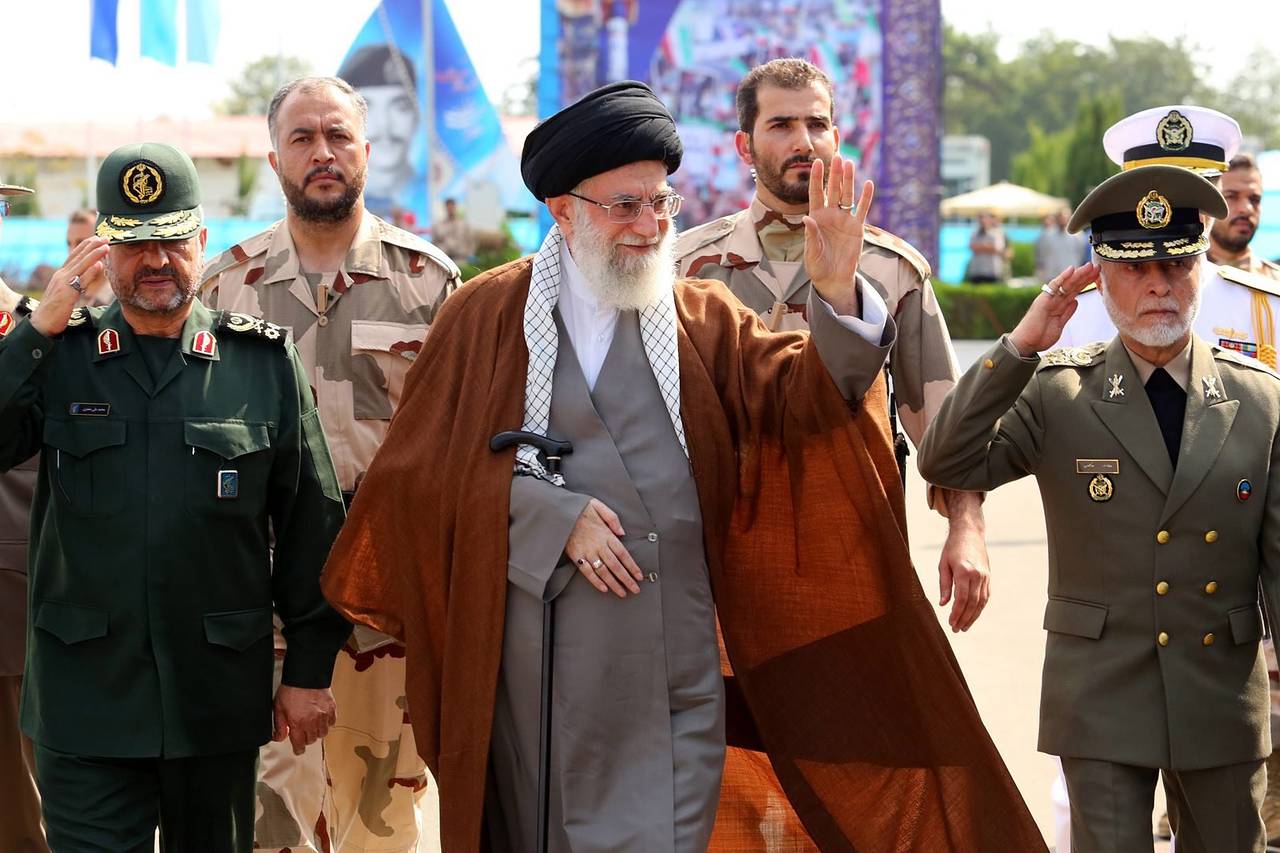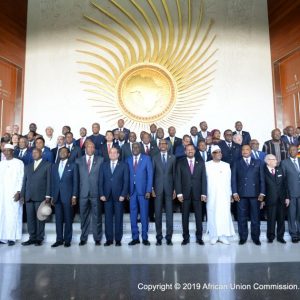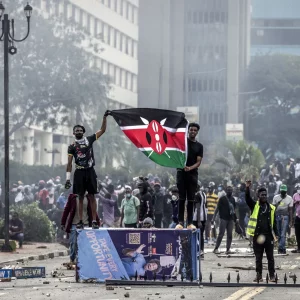Over the last four decades, the West, led by US administrations, has been antagonizing Iran and discouraging any cooperation with Tehran and the Ayatollah, Iran’s supreme leader. When asked who the “greatest adversary” is to the United States, for instance, Vice President Kamala Harris said that it was obviously Iran, surprising many that consider China and Russia to be the top US adversaries. After Iran’s first direct attack on Israel on April 13th, then-British Prime Minister Rishi Sunak accused the Iranian regime of “recklessness” and an “intent on sowing chaos” in the region. In alliance with Israel and the US, the French Foreign Ministry announced that it helped counter the April missile attack, condemning the “Iranian threat.” More recently, during the UN General Assembly conference in late September, Israeli Prime Minister Benjamin Netanyahu called Iran the mastermind of the “arc of terror,” which was created to destabilize the region and challenge Western civilization.
Simultaneously, on October 7th, 2024, Reza Pahlavi, the last Crown Prince of Iran before the 1979 Islamic Revolution, posted a message to the Iranian people, encouraging them to overthrow the Islamic Republic which threatened Iranians’ security and basic human rights. Despite the heavy Israeli and Western influence over Pahlavi, the Crown Prince pointed out Iran’s internal divisions, challenging the West’s demonizing framing of Iranian political strategy. Instead, recent actions by Iran and its conduct in conflict with Israel prove that Tehran has primarily focused on deterrence as its grand political strategy, in fear of Western intervention and exploitation of internal divisions. After the Iranian state’s ideological transformation in 1979, confrontations with the US, Israel, and subsequent demonization of Tehran’s regime prompted an “antichrist” view of the regime to the West. The recent conflict between Iran and Israel is the latest example of Western exploitation of Tehran’s authoritarian, frail regime.
The Birth of the “Antichrist”
The 1979 Islamic Revolution in Iran marks the most transformative moment in Iranian-Western relations. Before the Revolution, Shah Mohammad Reza Pahlavi ruled Iran. The Shah embraced Western influence and control over Iranian resources. Ever since the foreign-backed coup against Prime Minister Mohammad Mossadegh in 1953, the Shah agreed to concede to Western influence over Iranian affairs. Most significantly, during the 1973 Arab-Israeli War, the Shah refused to join the Organization of the Petroleum Exporting Countries (OPEC) in an embargo against the US. He also deterred Iraq from joining the war and provided oil and support for Israel.
Motivated by anti-imperialism, social justice, and political freedom, civilians initiated multiple resistance movements under the guidance of exiled Ayatollah Ruhollah Khomeini. Through strikes, boycotts, and tax refusals by civilians and civil servants, the Shah’s regime was economically crippled. Despite the Carter administration’s continued support of the Shah and the latter’s use of violent repressive methods against protestors, the Ayatollah consolidated his power and established the Islamic Republic, overthrowing the Shah in 1979 and exiling him to Egypt.
The Shah’s pro-Western foreign policy and Persian nationalist authoritarianism fueled mass appeal to Islamization and anti-imperialism, which the Ayatollah and his allies exploited during the Revolution. Pahlavi prioritized Iran’s pre-Islamic glories to further legitimize the throne, relying on Persia’s monarchical legacy. In 1971, the Shah praised Iran’s Achaemenid leader, Cyrus, in a luxurious ceremony marking the 2,500th Persian monarchy’s anniversary. Pahlavi later changed the official national calendar from the Islamic calendar to an imperial one, marking Cyrus’s first conquest of Babylon.
Consequently, Iranians and Shia clerics associated the Shah’s “White Revolution,” aimed at modernizing Iran, with political repression and economic inequality. Similarly, Western influence over the Shah motivated the Ayatollah’s earliest anti-imperialist and anti-Western rhetoric. Through the Revolution and its demands, the Islamic Republic’s authoritarian regime consolidated its power by adopting anti-imperialism and religious nationalism as its founding principles.
Internal Threats to Tehran’s Regime
Despite Tehran’s authoritarian grip on Iranians, ethnic and religious divisions continuously threaten Iranian territorial unity and social cohesion. Iran is an ethnically and religiously diverse country. Persians make up 61% of the total population, and other ethnic minorities include Azeris (16%), Kurds (10%), Lur (6%), Baluch (2%), Arabs (2%), Turkmen (2%), and other smaller communities. While 90% of Iranians practice Shi’a Islam, Iran harbors a smaller Sunni Muslim (9%) minority as well as smaller Bahá’í, Christian, Jewish, Sabean Mandaeans, and non-Abrahamic Zoroastrian minorities.
Post-Revolution authoritarianism systemized discrimination in the central government, fueling several separatist movements that actively threatened Tehran’s power. Some Balochs, for instance, have resisted the regime and called for unifying the Baloch-inhabited territories, currently divided between Iran and Pakistan. Most recently, Jaish ul-Adl (“Army of Justice”) has operated in the south Iranian Sistan-Baluchistan Province against government forces for the independence of a Baloch homeland. Just this last January, Jaish ul-Adl assassinated a commander in the Islamic Revolutionary Guard Corps (IRGC), a key security arm to Tehran discussed later in this article. On September 30, the same group killed three policemen in the province. While Pakistan also disapproves of Balochi separatism, other foreign powers have historically exploited ethnic tensions to threaten Iranian sovereignty and power.
Azeri separatist movements in the northwest have also threatened Tehran’s control over its territories next to Azerbaijan. Since the last Shah’s reign, foreign powers have exploited ethnic divisions for strategic control. After the British-Soviet invasion of Iran in 1941, the Soviet leadership pushed for the founding of a secessionist Azerbaijan People’s Government next to a similarly seceding Kurdish government. Although the unrecognized government lasted for one year, the risk of South Azerbaijani independence never faded. Recently, because Iran supported Armenia against Azerbaijani aggression in Nagorno-Karabakh, Baku has supported movements for Iranian Azeri independence or unification with the rest of Azerbaijan.
Therefore, Tehran’s fear of internal divisions is substantiated, explaining the regime’s development of disproportionately repressive forces to quash any domestic dissent. Separatist threats have confronted Iranian leaders since the Islamic Revolution through civil disobedience, domestic terrorism, and foreign intervention. However, Tehran has created the IRGC to achieve key security objectives: suppress any internal opposition and redirect foreign threats to proxy warfare. This policy abandons Western accusations of simple “Iranian terror” in favor of a rationalist explanation for Tehran’s use of deterrence.
Tehran’s Key Deterrents
The Islamic Republic’s deterrent policies intend to: (1) spread its enemies thin through proxy warfare and (2) raise the cost of attacking Iranian territories to improve the regime’s bargaining power through nuclear program development.
Proxy Warfare
Proxy warfare is the first tool Tehran used to deter conflict from its territories, fueling a rivalry between regional coalitions. Proxy wars refer to conflicts where a third-party state supports a non-state or state actor in conflict with another state. In Iran’s case, Tehran is the third party that has, for the most part, supported both Sunni and Shi’a militant groups and political parties in Lebanon, Syria, Iraq, Palestine, and Yemen in their conflicts against Israel and the United States. Iran’s strategy strives to deter Western and Israeli influence in the region without triggering a war on its land.
Today, Iranian proxies not only have the capabilities to deter Israeli assaults, but they threaten Israel and all its allies by jeopardizing key economic functions. Since Israel invaded the Gaza Strip in October 2023, Yemeni militant separatists, the Houthis, have seized and sunk more than 80 merchant vessels and killed 4 sailors. Jeopardizing the Red Sea trade routes threatens 30% of container traffic in the sea, and 11% of all global trade.
Iranian proxy strategy explains Israeli and American objectives to dismantle Tehran’s network in the Middle East. In 2020, for example, the US assassinated Qasem Soleimani, then-leader of the Quds Force. Headed by the IRGC, the Quds Force is Tehran’s force to fund, train, and arm its proxies. Today, more than one year after the October 7th Hamas attack, heightened proxy triggered Israel, with US support, to prioritize eliminating Iran’s proxies starting with Hamas and Hezbollah.
While Iran started using proxies as a mere defensive deterrent, Tehran’s increasing influence has emboldened its ambitions to take a more offensive approach without bringing war to its territory. For instance, when Iran attacked Israel for the second time ever in October, it warned the US shortly before the attack, implicitly assuring that the attack was not hugely destructive. Iran’s warning shows the government’s lack of interest to directly challenge Israel or the US, preferring a more decentralized proxy conflict.
Nuclear Program Development
Tehran has also developed nuclear capabilities as a bargaining tool that raises the stakes of foreign invasion or interference in Iranian affairs. By building nuclear weapons, Iran forces Israel and the US to the negotiating table on any issue it pleases, reinforcing its active deterrence strategy. However, as the deputy vice president of the Nuclear Threat Initiative’s Nuclear Materials Security Program said, “Iran will focus on its own security first, before taking any drastic and risky steps, including building a bomb.”
While Iran developed nuclear capabilities and Western powers heavily sanctioned the regime, Tehran’s deterrent policy has been consistently clear. For example, in 2008, even before the creation of the Joint Comprehensive Plan of Action (JCPOA), then-President Mahmoud Ahmadinejad dismissed the possibility of utilizing nuclear weapons.
To show more collaboration, Iran participated in JCPOA with the United Nations (UN) five Security Council’s permanent members plus Germany. In 2015, the JCPOA bridged an agreement between Iran and the West to delay Tehran’s nuclear development by a few decades. Despite initial Iranian compliance, the deal collapsed after the US withdrawal in 2018 and the re-imposition of sanctions. Since then, Iran has violated the deal’s terms, reaching unprecedented progress in developing its first nuclear weapon. Despite this, Tehran’s initial collaboration and compliance challenges the Western framing of Iran as a rogue threat in favor of an active deterring regime, open to diplomatic resolutions.
“Look East” Policy
Western, and especially American, sanctions over the decades have motivated Tehran to innovate a “resistance economy,” which largely depended on a “Look East” foreign policy. Hardliner Mahmoud Ahmadinejad’s election in 2005 was the first time Iran focused on gains from its eastern relations. Ahmadinejad envisioned an Iranian economy that prioritized Eastern allies. Subsequently, since the 2000s, Tehran has improved its relations incrementally with China, Russia, and India through increased trade and strategic cooperation. More recently, in 2023, the Brazil, Russia, India, China, and South Africa (BRICS) Bloc invited Iran to join the increasingly anti-Western coalition.
This novel approach, which abandons the Revolution’s “neither East nor West” foreign policy, is a reaction to deter the consequences of Western sanctions. Growing arms and commercial trade between Tehran, Russia, and China alleviated the pressure of Western sanctions. However, this partisan stance has limited Iran’s foreign policy options and pushed it into fragile alliances.
The bias in Tehran’s coalition-building against Washington, D.C. weakens this deterrent method. First, some of Iran’s allies, notably Russia, have historically viewed Tehran as a strategic rival, complicating their allyship dynamic. For example, because Moscow competed with Tehran over oil exportation, Russia has minimally contributed to the Iranian economy and military support. Second, dominating US influence limits Iranian allies’ extent of support to Tehran, including great powers. When the US put back sanctions after pulling out of JCPOA, the state-owned Chinese natural gas company halted its activity despite continued friendly relations with Tehran. This temporary diplomatic deterrent, therefore, limits Tehran’s opportunities to reconcile with the West while relying on uncertain partnerships.
Western Confrontations: A Case for Iranian Deterrence
While Tehran’s ideological and historical backgrounds frame these strategies as deterrents, the regime’s challenges to Western interests in the region push the latter to perceive Iranian actions as acts of aggression. The current proxy wars in the Middle East and Iranian-Russian relations show such collisions between Iranian deterrence and Western interests.
Iran’s proxy actions have endangered Tehran’s sovereignty and the Middle East conflict’s proximity to Iranian territories. For example, because of Israel’s war objective to “destroy” Hamas, Tehran risked its sovereignty when it invited Ismail Haniyeh, Hamas’s political leader. After Iranian President Masoud Pezeshkian’s inauguration in August 2024, Israel assassinated Haniyeh in Iran, trespassing on Iranian jurisdiction. Consequently, while the evolving proxy powers have increased Iran’s bargaining power with its top adversaries, they have attracted security risks and conflict closer to home.
Additionally, Iran’s “Look East” policy incriminated Tehran as a complicit party to Russia’s invasion of Ukraine. Iran has been developing its own Unmanned Aerial Vehicles (UAVs) after international sanctions and has been exporting them to countries including Ethiopia, Venezuela, Bolivia, and Russia. In 2023, US and Ukrainian intelligence reported that Iran smuggled weapons to Russia through Iraq. The smuggled weapons included drones, ballistic, and anti-tank missiles. As of September, Ukraine announced that Russia used more than 8,000 Iranian-developed drones in its invasion. The Biden Administration, consequently, accused Iran of being complicit in “war crimes” in the Ukrainian invasion, transforming Iran’s deterrence plan against the West into a confrontation with international laws.
While Iran continues to appeal to Russia, reports show no strategic advantage in continued weapon exports from Iran to Russia. In fact, tensions over Russian support to Turkey and Azerbaijan reinforce the idea that Iran has no intention to send destructive drones against Ukraine. Nevertheless, Tehran’s foreign policy indirectly challenges wider European security at the least and global ones at the most, pushing the regime to take a more antagonistic stance on the international stage.
The Future of the Islamic Republic’s Future
Although the IRGC quashed most protests, political thinkers believe that this movement prepares Iran for a near-future revolution. Despite the country’s deep connection to Shi’ism, polls show that 84% of Iranians prefer a secular government in Tehran. This increasing shift in popular preference threatens the regime’s long-held religious nationalist approach to governance.
Foreign states have also embraced and supported political change in Tehran. In September, PM Netanyahu warned Iran against any violent offenses against Israel, saying that “there is no place in Iran—that the long arm of Israel cannot reach. And that’s true of the entire Middle East.” Tel Aviv has been proving this warning to be credible: Israeli Defense Forces have been assassinating top Axis of Resistance leaders. Most recently, they killed Hezbollah’s leader, Hassan Nasrallah, and the October 7th attack’s key Hamas strategist, Yahya Sinwar.
Compounding pressures on the Islamic Republic threaten the regime but also pose risks of its overthrowing. Even if the Ayatollah is overthrown, Iranian leaders home and abroad need to be ready to create a post-revolutionary government that stabilizes and unifies Iran. While Crown Prince Pahlavi offers to lead this plan, support for the overthrown Shah’s son, who is heavily supported by US and Israeli resources, remains uncertain. Nonetheless, without a representative, popular political alternative to the Islamic Republic, the soon-coming revolution threatens Tehran with a power gap, exacerbated divisions, and potential foreign intervention.
Featured Image Source: Wall Street Journal






Comments are closed.